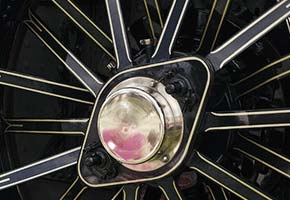Method and Device to Monitor & Control Efficiency of the Friction Welding ProcessA device that can be readily attached to inertia or direct drive friction welding equipment to determine energy efficiency in-situ during welding, providing real-time feedback for improving control. The NeedFriction welding is a category of solid-state welding processes that uses frictional heat generation at the weld interface to plasticize the work pieces and produce a metallurgical bond. The welding parameters used in large-scale industrial production are typically determined via trial and error. During this process, sub-scale coupons are welded with a variety of parameters and inspected for quality performance. The welding parameters are then adjusted accordingly. This optimization process is time consuming and costly due to high labor requirement, electricity usage, and consumption of high-value materials. Additionally, parameters often do not translate well from small-scale coupons to large-scale production. A technology that allows manufacturers to determine weld energy efficiency in real-time and control the appropriate parameters during production is needed to reduce the time and cost for large-scale industrial rotary friction welding. The TechnologyResearchers at The Ohio State University, led by Dr. Wei Zhang, have developed a device and method to monitor and control friction welding efficiency through various in-situ measurements. The device can be attached to an inertia or direct drive welding machine without equipment modification. The device utilizes a novel method for determining energy efficiency which allows for in-situ process monitoring and control. Commercial Applications
Benefits/Advantages
|

Tech IDT2016-036 CollegeLicensing ManagerZinn, Ryan InventorsCategoriesPublications |
